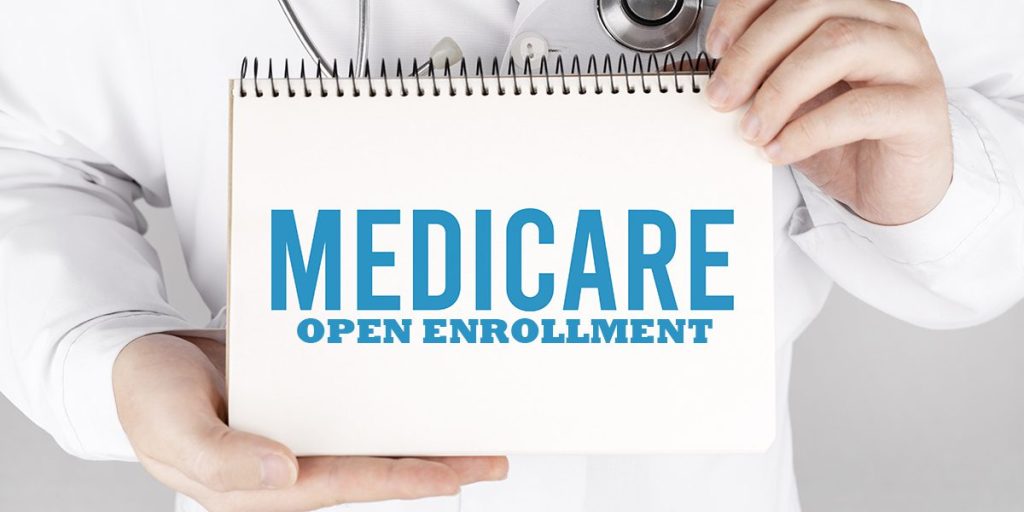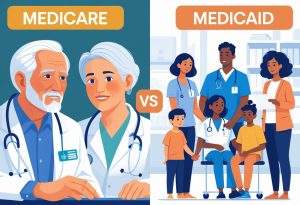There are five different Medicare enrollment periods, including Medicare Open Enrollment. Knowing when the Medicare open enrollment window falls allows you to change your Medicare plans to your advantage.
What is Medicare Open Enrollment?
Also referred to as the Medicare Annual Election Period (AEP for short), the Medicare Open Enrollment period is when current Medicare beneficiaries may make changes to their existing health insurance.
Any changes you make to your Medicare plan during this period will go into effect on January 1st of the following year.
You may be automatically enrolled in Medicare Part A and Medicare Part B if you are over 65 and currently receive Social Security or Railroad Retirement Board Benefits. As a reminder, Medicare Parts A and B, referred to as Original Medicare, cover hospital insurance and outpatient services but not Medicare drug coverage.
However, with 37% of Medicare beneficiaries enrolling in Medicare Advantage plans (Medicare Part C) and 74% adding Part D coverage (the prescription drug plan), knowing the AEP window is vital in getting necessary health coverage.
During the Medicare Open Enrollment period, Medicare beneficiaries can do the following:
- Switch from or supplement Original Medicare
- Switch Medicare Advantage plans
- Enroll in one of the Medicare prescription drug plans
- Leave your current plan
Eligibility for Medicare Open Enrollment
The Medicare open enrollment period is underway, starting October 15th and ending December 7th, 2022. This is the only allowable timeframe for many Medicare beneficiaries to update Medicare coverage, add a Medicare supplement, or switch plans.
To be eligible to sign up for Medicare benefits, you must be eligible to enroll in Medicare and enrolled. Current requirements to be eligible for Medicare include:
- U.S. citizens or permanent legal residents living in the United States for five consecutive years
- Individuals or spouses that have been in the workforce paying taxes for at least 10 years
- Individuals or spouses that are government employees or retired government employees
- Be 65 years of age (or any age if receiving Social Security disability benefits, have end-stage renal disease, or ALS)
If you are brand new to Medicare, the AEP will apply to you next year. Instead of participating in the fall period, you will enroll in Medicare during your initial enrollment period window and select a Medicare plan, including options for Medicare Advantage and Medicare prescription drug coverage.
Medicare Initial Enrollment Period vs. Medicare Open Enrollment Period
Because there are multiple enrollment periods, it can be challenging to understand which period applies for you. The most important Medicare enrollment dates Medicare enrollees should be aware of are the ones that fall within your initial enrollment period (IEP). The IEP is different for everyone, and it’s based on your birthdate.
The initial enrollment period begins three months prior to your 65th birthday month and extends three months beyond your birthday month. In all, the Medicare initial enrollment window is seven months.
For various reasons, not everyone signs up during the initial enrollment period (which could involve a late enrollment penalty). Missing this deadline does not bar you from enrolling in Medicare, but you won’t be eligible for the open enrollment period. Instead, you’ll be eligible enroll during the Medicare General Enrollment period from January 1st through March 31st.
Types of Plan Changes That Can Be Made During Medicare’s Open Enrollment Period
The fall open enrollment period is a chance to review your existing Medicare coverage options. During this time, many Original Medicare holders switch to Medicare Advantage coverage or add prescription drug coverage to reduce out of pocket costs.
Here a few common scenarios that happen during the open enrollment period:
- You already have Original Medicare with Medicare Supplement insurance and a prescription drug plan, and you want to change your prescription drug coverage or move to a Medicare Advantage plan.
- You have a current Medicare Advantage plan but want to change to a different Medicare Advantage plan.
- You already have a Medicare Advantage plan, but you want to switch to Original Medicare or get a Medicare Supplement plan (referred to as Medigap) and enroll in a prescription drug plan.
Note that if you have Medigap plan coverage, the AEP does not apply. Instead, you’ll wait for the Medicare special enrollment period to make changes. However, you can get a new Medigap plan any time of year.
About the Medicare Advantage Open Enrollment Period (MAOEP)
If you are enrolled in a Medicare Advantage plan, you have additional dates that you can take advantage of that will allow you to change from one Medicare Advantage plan to another. This timeframe, called the Medicare Advantage Open Enrollment Period, runs from January 1st through March 31st.
People with Medicare Advantage can also revert to Original Medicare and a Medicare prescription drug plan during this window.
Advantages of Changing Coverage During the AEP
According to Kaiser Family Foundation, only about 10% of people change Medicare plans during the AEP, and it’s important to compare coverage options.
Over time, health care costs, and therefore, the cost of the Federal Medicare program, can change each year. As these plans shift annually, it could affect your network of health care providers, drug coverage, premiums, and cost structures. It’s advantageous to compare the options available to ensure you still have the best coverage for your medical needs and budget.
In some instances, you could actually see the cost of Medicare drop, especially any Medicare drug plan. The Inflation Reduction Act has served to cap the costs of insulin and eliminated having to pay for vaccines. This update applies to those with Medicare Part D coverage for prescription drugs.
Further, your health needs may shift over time, making one Medicare drug plan more economical than another.
If you don’t make changes during this time, you will be locked into your current plan until the next annual election period unless you have one of the Medicare Advantage plans.
Conclusion
The Medicare Open Enrollment end date is fast approaching, and with it, a Medicare premium increase for many beneficiaries. Don’t let another year pass without the right type of insurance coverage. Speak to a licensed insurance agent to make the most of your Medicare coverage.






